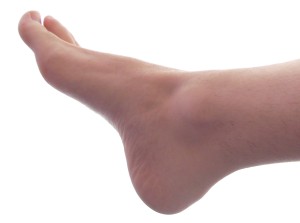Shoulder pain can affect much more than just our comfort. It can limit our ability to pick up our children, carry groceries, or even reach for something on a high shelf. If you’ve been struggling with nagging shoulder pain, there’s a strong possibility it may be due...
A stress fracture is a small crack within a bone. However, unlike acute fractures, which occur from a sudden injury, stress fractures gradually develop over time and are common among athletes, runners, and individuals with physically demanding lifestyles. These tiny,...
Tendons are tough, fibrous tissues that connect muscle to bone and play a critical role in our movement, from helping us swing a tennis racket to allowing us to lift groceries or climb the stairs. But for all their strength and flexibility, tendons are also...
Common Foot Disorders

We use our feet much more than we realize. They help us get around and enable us to walk from one place to another. We put a lot of stress on them when exercising and performing other strenuous tasks that require them to support our body weight. For this reason, our feet are prone to many different types of injuries and disorders.
If you’re dealing with foot pain, you could be suffering from any one of the many common foot disorders. Read on to learn more about these disorders and find out how you can quickly find pain relief.
Arthritis
Arthritis is a very common disease that causes the joints of the foot to become inflamed, which results in a stiff, painful feeling. The ends of the bones in your feet are covered in articular cartilage which allows them to slide easily and painlessly against one another. In joints that suffer from arthritis, the cartilage wears away and the bones rub against each other. This results in a great deal of pain for the patient.
Bunions
This deformity occurs in the first metatarsophalangeal joint located at the base of the big toe. Bunions are caused by daily activity that puts continuous stress and pressure on the metatarsophalangeal joint. When the first metatarsal bone of the foot begins to turn outward and the big toe points inward, the joint begins to protrude and form a bump on the foot.
While women tend to get bunions more than men, they can happen to anyone. They are not typically hereditary, but they can be passed from one generation to another. Bunions also commonly form on flat feet or feet with low arches.
Hammer Toe
Hammer toe is when the second, third, or fourth toes are bent at the middle joint. This deformity is often caused by wearing shoes that are too tight because pressure builds and forces toes into the bent position. It can also be caused by a muscle imbalance. In this situation the muscles work to straighten out the toe, but when the lack of room within the shoe doesn’t allow them to, the muscles tighten.
This disorder can typically be reversed by wearing roomy shoes that allow the toes to wiggle freely.
Plantar Fasciitis
This disorder causes pain in the bottom of the heel and is one of the most common foot conditions that affects approximately two million patients per year. The band of tissue that supports the arch of your foot, called the plantar fascia, becomes irritated, inflamed, and causes pain. Irritation of the plantar fascia is the result of the great deal of stress we put on our feet. Too much pressure can tear the tissues and lead to inflammation and pain.
If you’re dealing with any of these common foot disorders, schedule an appointment with an orthopaedic physician to discuss your treatment options. While non-surgical treatments can be very effective, some cases are too severe and require surgery. Your doctor will help you determine the best course of action for your situation.
For more information about foot pain and treatment options, download our e-book,Pains and Sprains: A Complete Guide to Foot Injuries and Disorders.


